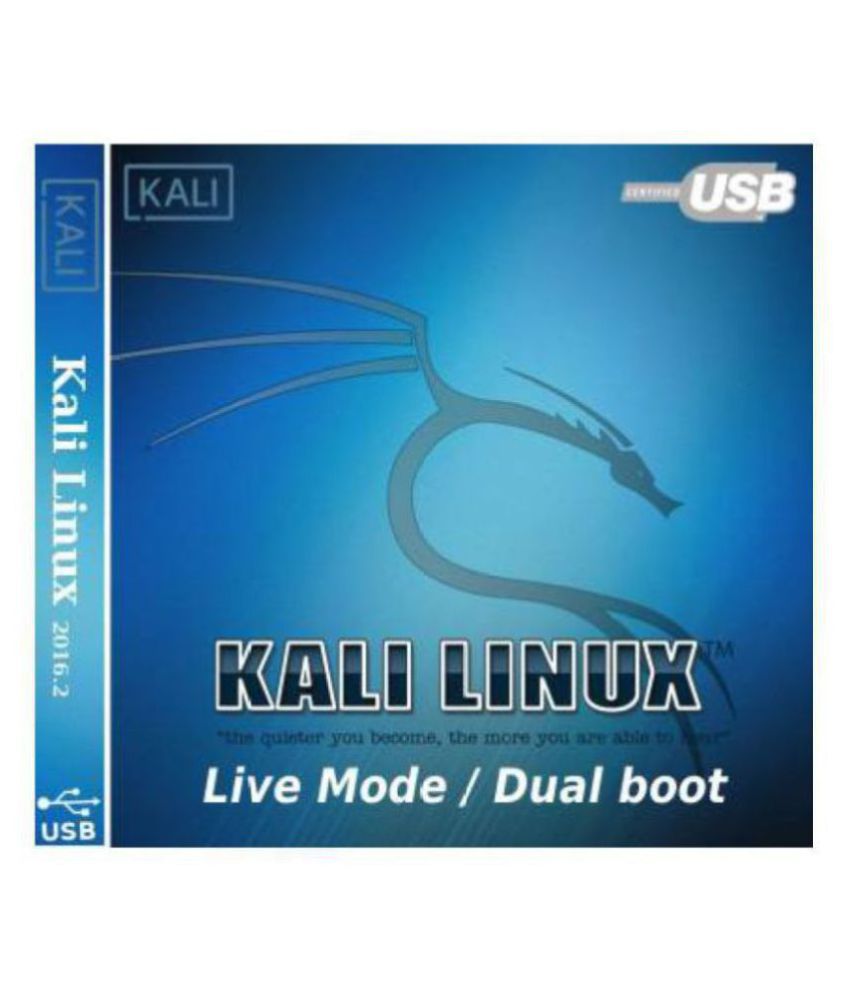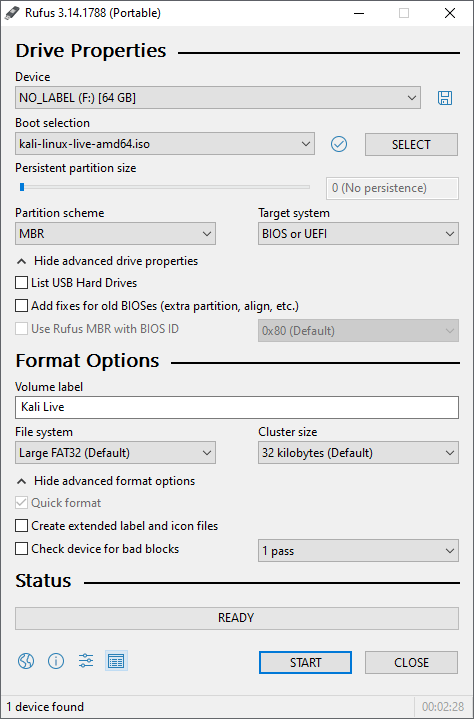


But some users are faced with the fact that even after creating a persistent storage, files and installed programs disappear after a reboot.$ cryptsetup -verbose -verify-passphrase luksFormat For an example of how to create a bootable USB with Persistence, see “ How to make Kali Linux 2022 Live USB with Persistence and optional encryption (on Windows)”.Īfter creating Persistence, all changes should be “remembered” and be visible after a reboot. In order for files and changes in the OS to be saved between reboots, you can create a Persistence partition, in which all changes will be stored.
But immediately after reboot, all changes made will be lost and the system will return to its initial state. Identify your external USB with diskutil - the disk ID ( disk2, disk3 etc is represented as

That is, within one session, work in the Live system does not differ from work in any other Linux. All settings are stored in the virtual file system. A feature of the Live image is that you can install programs, save files and make other changes and settings in the operating system. That is, you can boot into Linux and use the programs and tools of this operating system. The result is a bootable USB flash drive with Linux. Persistence is a partition on a flash drive with a Live Linux system, thanks to which the programs and settings installed on the system are saved.Ī live image with a Linux distribution can be written to a USB flash drive.


 0 kommentar(er)
0 kommentar(er)
